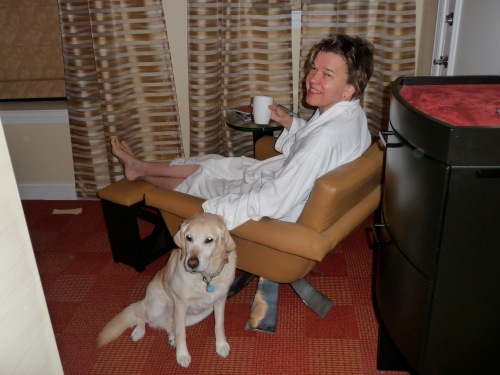How Do Blind People Surf the Net?
December 20, 2009 • 14 Comments • Posted in blindness, technology for people who are blind, UncategorizedIf you’ve never seen (and heard!) a blind person using a talking computer, it must be hard to imagine how we manage a Web site without seeing the screen. Or without using a mouse. How do we find the buttons we need? What does a voice synthesizer say when it comes across a link? A picture?
Thanks to the wonderful geeks at the Trace Research and Development Center at University of Wisconsin-Madison, now you have an easy way to find out! They’ve put together a short video demonstrating how screen readers help those of us who are blind.
The narrator of the video has been blind since birth and works at Trace, a center known as a pioneer in technology and disability. I’ve seen (okay, heard) other screen-reader demonstration videos before, but this is my favorite. It’s so well-organized that you learn a lot in a very short time, and narrator Neal Ewers has such a pleasant voice that he makes the demonstration downright entertaining!
A CNN story last week called Web accessibility no longer an afterthought estimated 60 million people in the U.S. can’t use a computer to get on the Internet in the normal fashion. As of now there are no explicit laws to force companies to design Web sites that are accessible to people with disabilities — the Americans with Disabilities Act (ADA) was written in 1999, several years before the Web became an everyday phenomenon. The CNN story pointed out that whether web accessibility is covered by the ADA or not, one thing will continue motivating businesses to comply: money.
Yahoo’s Brightman estimated that there’s about $220 billion in discretionary spending available to disabled people.
Making a Web site accessible to as many people as possible isn’t just the right thing to do, it also makes business sense, he said.Also, with a rapidly aging population in many parts of the world — notably the U.S. — accessibility requirements will become useful for today’s crop of baby boomers as they grow older.
People over 65 are increasing their use of the Internet, according to Nielsen, and features designed for accessibility could aid those who aren’t technically disabled but wouldn’t mind a little extra help.
The story reported that two of the biggest Internet companies in the world are starting to view accessibility as an important part of what they do. Yahoo requires every new hire to receive accessibility training from Alan Brightman, senior policy director of special communities, and accessibility manager Victor Tsaran, who lost his sight at age five. Yahoo also books engineering teams for tours of their Accessibility Lab. Google just rolled out a service that will let YouTube users add captions to their videos, giving people who are deaf a chance to take advantage of distance-learning opportunities, among other things.
As the Web moves more from an era of presentation to an era of two-way “data-driven” communication, accessibility becomes even more important, said Jonas Klink, accessibility program manager.
Web accessibility has come a long way in the decade since many of these proposals were first floated.
I have people like Neal Ewers and his colleagues at Trace Center to thank for advocating long and hard for Web accessibility. Trace Center opened in 1971. That’s 38 years ago, folks. If Trace and all the other thousands of organizations and advocates hadn’t had the forethought to work on technology and disability issues early on, we might not have even had the technological capability we have today to make Web sites accessible, much less the ability to convince companies that taking the time and energy to make their sites accessible is worth it. THANK YOU, Trace and all you other wonderful advocates. Without you, I might not be a writer. Or a teacher. Or a public radio commentator. Or a blogger!



